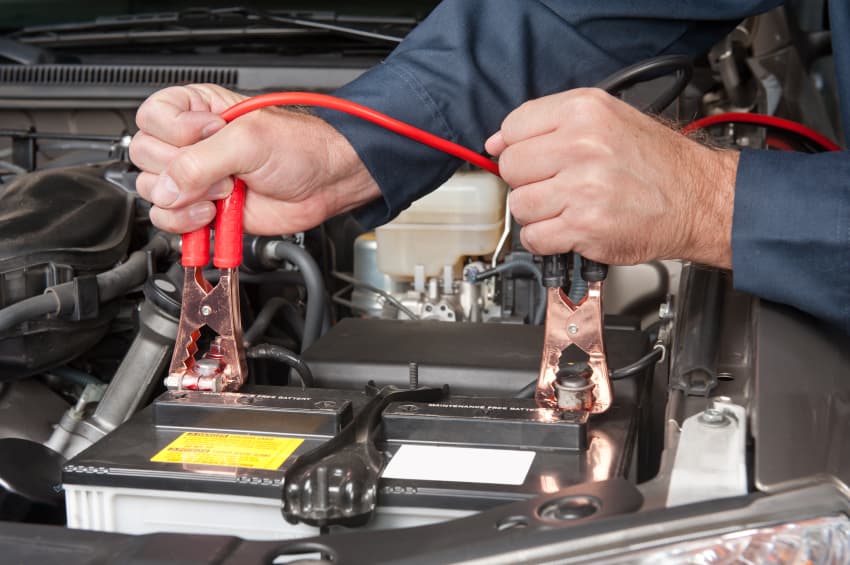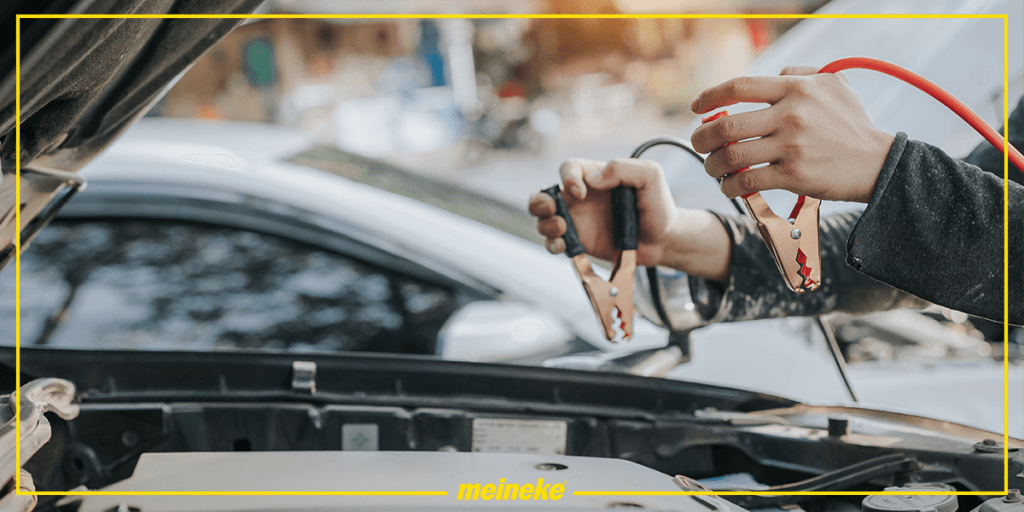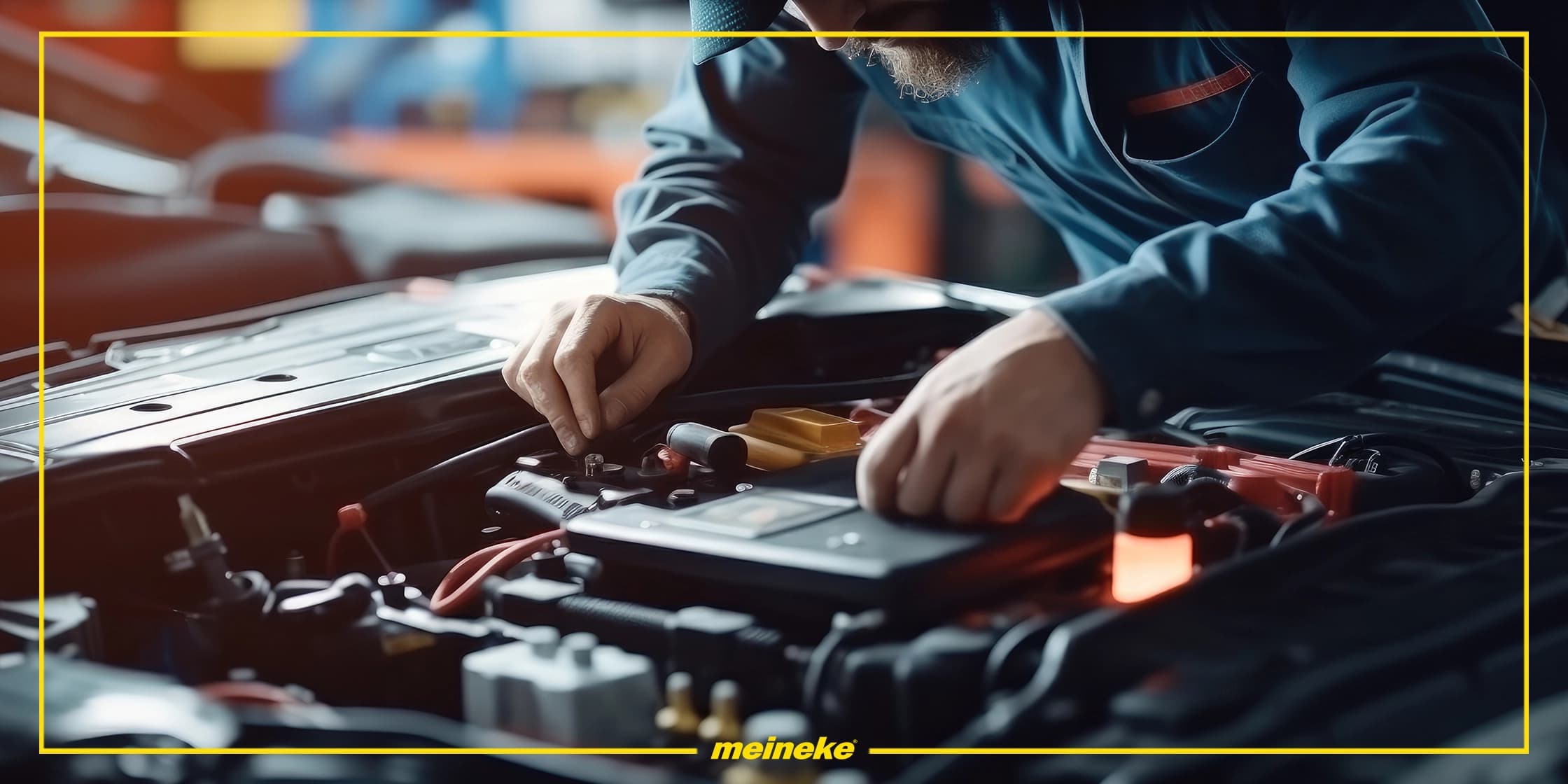
February 23, 2017
5 Tips for Getting the Most from Your Vehicle’s Battery
You never want to be stuck by the side of the road with a stranded vehicle. But every year, dead vehicle batteries leave millions of Americans doing just that, stuck in their driveways or looking for help from passing motorists. In honor of National Battery Day on February 18, the total car care experts at Meineke – who change more than 40,000 batteries annually – share tips and advice on identifying issues and extending the life of your vehicle’s battery.
Take a look at this infographic from the car care experts for more car battery advice and tips. Use this information to keep your battery charged and vehicle operating smoothly.
- Diagnose the Issue
Telltale signs of a dead battery are an engine that is slow to turnover and dimming lights on the dashboard. Vehicles today provide indicators that the battery might be failing with a check engine or battery warning light on the dashboard. If a problem is suspected with the battery, a visual inspection under the hood can help confirm whether the battery is the issue. Look for signs like a swollen battery case or corrosion on the terminals. Both could be a sign that it is time for a battery replacement.
- Determine the Cause of the Failure Before Replacing or Recharging The Battery
Common causes of battery failure include leaving headlights, interior lights, flashers, electronic chargers and the radio on while the vehicle isn’t running. Not starting a car for a long period of time, particularly in cold weather, is another common issue. Experts say vehicle batteries lose 33 percent of their charge when the temperature dips below freezing and more than 50 percent of the charge when the temperature falls below zero. Poor battery maintenance and the battery age can also reduce battery charging ability.
- Charge Vehicle Batteries Correctly
Recharging vehicle batteries is commonly referred to as “jump starting.” First, you’ll need another vehicle with a functioning battery.
1. Park both vehicles next to each other so they’re as close as possible
2. Attach the red/positive cable to the positive battery terminal on the vehicle with the dead battery; repeat on the functioning battery car
3. Attach the black/negative cable to the negative battery terminal of the functioning battery; attach the clamp on the other side of the cable to an unpainted, metal part of the car
4. Start the engine of the functioning vehicle
5. After a few minutes, start the vehicle with the dead battery
6. Let both vehicles run for a 3 – 5 minutes to ensure the dead battery is properly charged
7. Once charged, remove the cables in the reverse order of how you attached them
- Routinely Maintenance Your Battery
Regular maintenance helps extend battery life. Ask a trusted car care partner to conduct a safety check with every oil change. Battery safety inspections include checking terminals for corrosion and cleaning them if needed. If your vehicle will not be used for an extended period of time, it’s wise to invest in a battery charger so you’re prepared if and when you need a charge.
- Find a Trusted Total Car Care Partner
The best way to avoid overall vehicle failure is to have a professional car care partner you trust to maintain your vehicle. A trusted partner will diagnose and treat a variety of vehicle problems ranging from battery failure to more complex issues. The certified technicians at Meineke’s more than 900 total car care centers are always ready to help. Visit www.meineke.com to schedule your appointment today.
Stay Charged! Battery Facts and Tips From Meineke Car Care Centers
Every year, *millions *of American motorists are left stranded due to dead car battery. In honor of National Battery Day on February 18th Meineke shares tips and advice to help you get the most from your car’s battery. If your car has ever failed to start, you know first-hand how frustrating it can be.
But there’s good news: While dead batteries happen, and are not totally preventable, there are plenty of steps you can take to ensure that your battery remains fully charged, providing power to your vehicle for as long as possible. We’ll start with five pointers:
- Know the signs of a dying or dead battery. If yours is slow to turn over, or if the lights on your dashboard seem to be dimming, that means you may have a battery that’s on its last limb. A visual inspection of your battery can also help you identify potential problems, like corrosion or a swollen battery.
- Before attempting to repair or replace the battery, it’s important to learn the cause of failure. These might include leaving your headlights on overnight, not starting the car for a long period of time, or using the radio when the vehicle isn’t running. Battery age, poor battery maintenance, and even freezing temperatures can also be problematic.
- Make sure you know how to charge your car battery correctly—if you’re unsure, don’t risk it. Take it to your trusted, local vehicle repair partner to have the battery replaced by a professional.
- Invest in routine maintenance for your car battery, as well; every time you go in for an oil change or tire rotation, ask for a battery safety check.
- Make sure you know a trusted technician who can help you deal with battery issues as they arise; your local Meineke shop would be more than happy to assist, of course.




